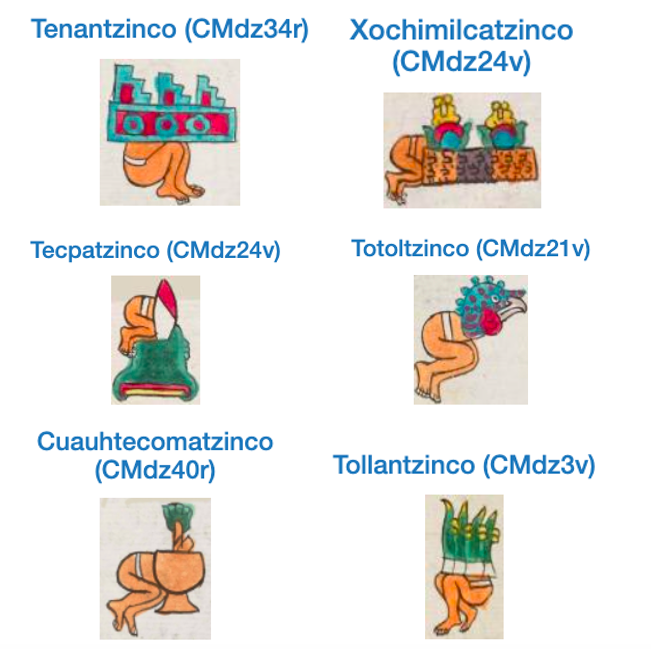11) Tzintli: Not "Buttocks"

Any glyph that contains the phonetic -tzin (a reverential, for a personal name or a sacred object, or "little"/"lower" for a place name in Gordon Whittaker's interpretation, and implying a spinoff town in Frances Karttunen's approach) appears as a buttocks, rump, or rear end of a human body, the tzin(tli). It is important not to infuse any such meaning of buttocks and only the phonetic value, tzin, into the reading of glyphs that contain this element. Tzintli becomes -tzin or -tzinco just as tlantli becomes -tlan as a locative suffix. Perhaps one way to remember this is to recognize that many elements of compound glyphs are to be read without their absolutive suffixes (such as -tli, -li, or -tl); they are just reduced to the stem only. The locative suffixes are attached to the end of the stems.
In this collection, when a place name does include the absolutive and is followed by an "i," we are breaking it into two words. One example is Acatl Icpac, "Above the Reeds." Another is Cuezcomatl Iyacac, "The Nose (or Point) of the Granary." Incidentally, yacatl (nose) is something like tzintli, in that it relates visually to human anatomy, but yaca(tl) often has a reading that relates to landscapes (such as point or peak). The word for shoulder, acol(li), similarly seems to refer to a bend, corner, or nook in the landscape. All these body parts provide handy anatomical referents for expressions that can be imbedded in the landscape and end up having nothing to do with human bodies.
(SW; more forthcoming)
